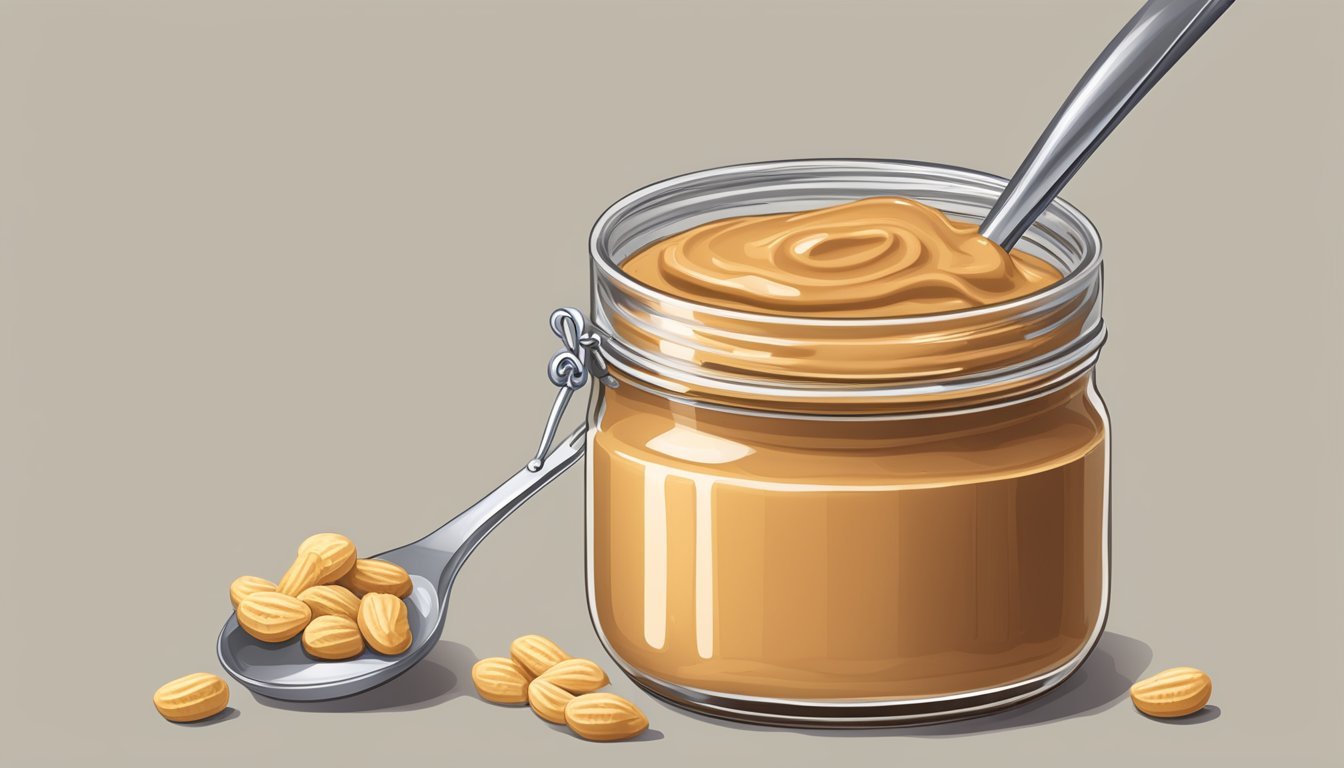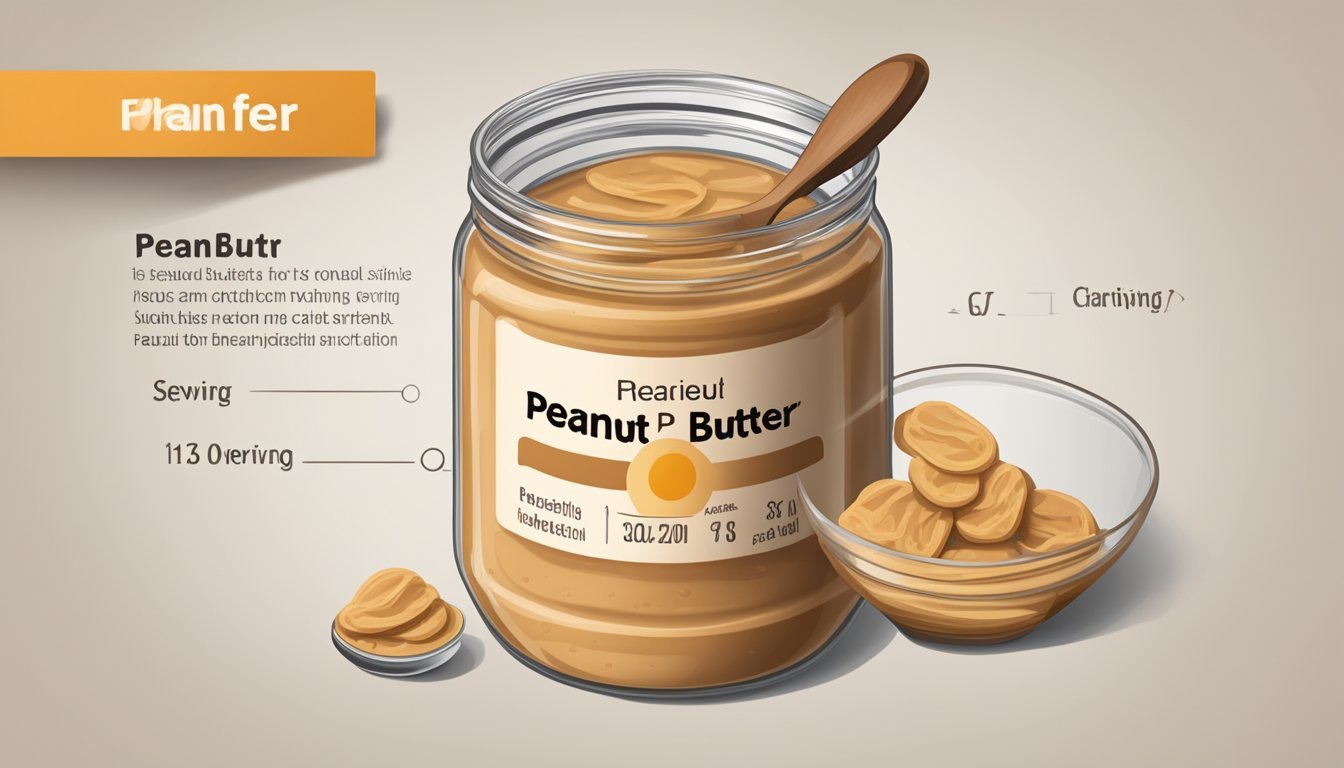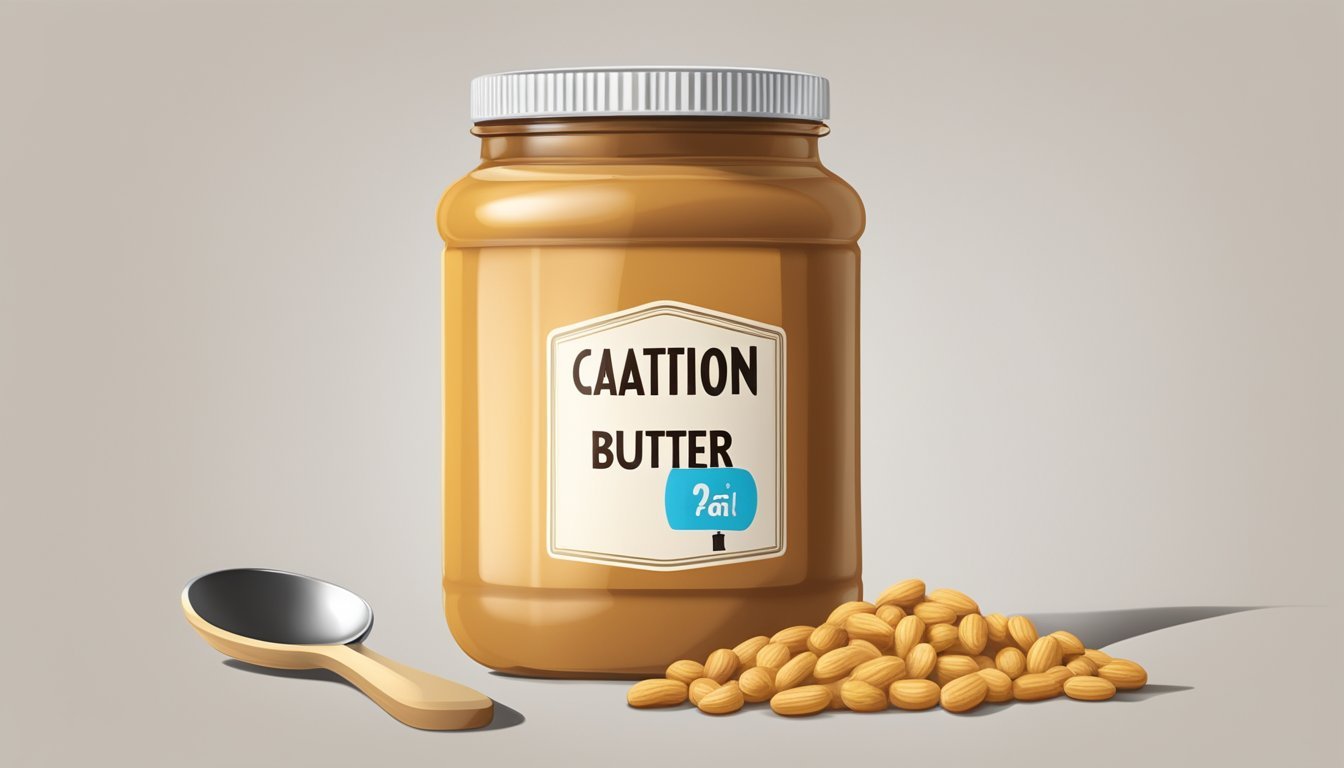How Much Peanut Butter Per Day Is Too Much?
Understanding Healthy Limits
Peanut butter is a staple in many households, often praised for its rich flavor and nutritional benefits. It contains protein, healthy fats, vitamins, and minerals, making it a potentially beneficial addition to a healthy diet. However, as with many foods, there can be too much of a good thing. The key to incorporating peanut butter into one's diet is moderation, which ensures that a person can enjoy the benefits without experiencing the negative consequences of overconsumption.
Understanding the limits of how much peanut butter to consume daily is important, as excessive intake can lead to an imbalance in nutrients and potential health risks. Peanut butter is dense in calories and contains fats, which, while mostly monounsaturated and polyunsaturated, need to be consumed in controlled amounts to maintain a balanced diet. Although peanut butter offers a good dose of protein and essential vitamins and minerals like magnesium and vitamin E, it's crucial to consider its place within an individual's overall dietary intake.
Health guidelines suggest that excessive consumption of sodium and fats should be avoided, which is why monitoring the amount of peanut butter one eats is essential, especially if the product contains added salt. Consuming it in large quantities can disrupt the delicate balance of omega-3 to omega-6 fatty acids and lead to health issues such as inflammation or oxidative stress. Therefore, individuals should be mindful of their peanut butter intake and consider it as part of a varied and balanced diet.
Nutritional Profile of Peanut Butter
Peanut butter is revered not only for its creamy texture and rich taste but also for its dense nutritional profile. It is a source of essential nutrients such as protein, healthy fats, vitamins, and minerals, while also being a caloric-dense food with a considerable amount of carbohydrates.
Protein Content
Each 2-tablespoon serving of smooth peanut butter typically contains 7 grams of protein. Protein is a fundamental macronutrient that assists in building and repairing muscles and tissues, and is vital for physiological functions ranging from enzymes to hormones.
Fat Composition
Peanut butter's high fat content consists predominantly of monounsaturated and polyunsaturated fats, including oleic acid. The ratio of saturated to unsaturated fats is skewed towards the latter, making it a source of healthier fats. However, it should be noted that it also contains omega-6 fatty acids, which in excess can disrupt the body's balance of omega-3 to omega-6.
Monounsaturated fat: Essential for heart health.
Polyunsaturated fat (includes omega-6 fats): Important but should be balanced with omega-3 fats.
Saturated fat: Present in smaller quantities but should still be consumed in moderation.
Vitamins and Minerals
A rich array of vitamins and minerals are housed within peanut butter. These include magnesium, potassium, zinc, copper, phosphorus, niacin (vitamin B3), and vitamin E. These nutrients are crucial for bone health, energy production, antioxidant defence, and overall well-being.
Magnesium: Supports hundreds of biochemical reactions in the body.
Vitamin E: Acts as an antioxidant, protecting cells from oxidative damage.
Niacin: Helps convert food into energy and is vital for the health of the nervous system.
Calories and Carbohydrates
A 2-tablespoon serving of peanut butter contains about 190 calories and 8 grams of carbohydrates, of which 2 grams are dietary fiber. Fiber aids in digestive health and can help to moderate blood sugar levels. The calorie density of peanut butter means it should be consumed in moderation within a balanced diet to maintain a healthy energy balance.
Health Benefits and Risks
This section examines how moderate peanut butter consumption can be beneficial to health, yet also considers the potential risks associated with its overconsumption.
Cardiovascular Health
Peanut butter contains monounsaturated fats and polyunsaturated fats, including omega-3 and omega-6 fatty acids, which are known for their positive effects on heart health. Regular consumption of these healthy fats can help lower the risk of heart disease by reducing cholesterol levels and maintaining a healthy blood pressure. However, excessive intake or choosing peanut butter with added trans fat can negate these benefits.
Weight Management
Rich in protein and dietary fiber, peanut butter can promote satiety, aiding in weight management. However, its high calorie density can contribute to weight gain if consumed in large amounts, especially for individuals with obesity or those not following a balanced diet.
Diabetes and Blood Sugar Control
Peanut butter has a low glycemic index, which may help control blood sugar levels and reduce the risk of type 2 diabetes. But it's essential to monitor portion sizes, as overeating may lead to an increase in calorie intake, impacting blood sugar regulation.
Anti-Inflammatory Properties
Peanut butter contains antioxidants such as vitamin E and other compounds that may exhibit anti-inflammatory properties. This can potentially reduce the risk of chronic conditions like cancer and combat pain associated with inflammation. Consumers should be cautious with commercial peanut butter varieties, which might be high in omega-6 fatty acids and can contribute to inflammation if not balanced with omega-3 fats.
Potential Allergies and Side Effects
Peanut butter can trigger an allergic reaction in people with a peanut allergy, which can range from mild to severe. Besides, peanut butter often contains added sodium, which, when consumed in excess, can lead to high blood pressure and other health issues. Always choose peanut butter with no added sugars or salts to minimize side effects.
Daily Intake Recommendations
When considering how much peanut butter one should eat daily, it is imperative to account for individual dietary needs and the nutritional content of peanut butter. Adhering to recommended serving sizes and understanding the need for balance within the diet are key to enjoying peanut butter healthily.
Serving Size Guidelines
Guideline:
1 tablespoon of peanut butter is considered a standard serving size.
Serving Size Facts:
Contains approximately 7 grams of protein.
Provides roughly 147 mg of sodium if salt is added.
Balancing Consumption with Dietary Needs
To maintain a balanced diet, individuals should eat peanut butter in moderation and in conjunction with other nutrient-rich foods. Dietary balance requires monitoring:
Sodium intake: No more than 1,500 mg per day.
Fat types: Peanut butter contains oleic acid, beneficial for cholesterol and blood sugar levels.
Recommendation for Balance:
Ensure a ratio of omega-3 to omega-6 is as close to 1:1 as possible.
A much higher omega-6 content, common in peanut butter, may lead to inflammation if not balanced with omega-3s.
Peanut Butter in Different Diets
Peanut butter can be a versatile component in varied diets, offering a source of plant-based protein for vegans and serving as a low-carb option for those on ketogenic diets.
Plant-Based and Vegan Options
In a plant-based or vegan diet, peanut butter serves as an important source of protein and healthy fats. Since it's devoid of animal products, it fits perfectly into a vegan diet. A serving of peanut butter not only contributes protein but also provides vitamins and minerals essential for overall health.
Protein Content: Approximately 7-8 grams per 2 tablespoon serving
Vital Nutrients: Magnesium, phosphorous, zinc, and niacin
It's important for individuals following a vegan diet to include a variety of protein sources to ensure they are getting all the essential amino acids their bodies need.
Low-Carb and Keto Considerations
For those on a low-carb or ketogenic diet, peanut butter can be incorporated in moderation. It offers a combination of high fat, moderate protein, and low carbohydrates, making it suitable for these diets where the focus is on minimizing carbohydrate intake.
Total Carbohydrates: About 6-7 grams per 2 tablespoon serving
Net Carbohydrates: Approximately 4-5 grams after deducting dietary fiber
People must be cautious about the types of peanut butter they choose, opting for options without added sugars to remain within the carbohydrate limit of their specific diet plan.
Types and Brands of Peanut Butter
Selecting the right peanut butter can be a matter of personal preference, health considerations, and dietary needs. Consumers should be aware of the differences in processing and ingredients among various brands.
Differences Between Natural and Processed
Natural Peanut Butter:
Ingredients: Typically made with just peanuts, and sometimes a bit of salt.
Texture: May have a grittier texture and requires stirring due to oil separation.
Preservatives: Lacks the hydrogenated oils and stabilizers found in processed versions.
Ingredients: Often contains added sugars, oils, and fats.
Texture: Creamier and more uniform consistency due to added stabilizers.
Shelf Life: Contains preservatives to extend shelf life, allowing it to stay fresher longer without refrigeration.
Nut Butter Varieties
Almond Butter: Rich in monounsaturated fats, a good source of Vitamin E.
Other Varieties: Include cashew butter, hazelnut butter, and sunflower seed butter, each offering distinct nutritional profiles and flavors.
Specific Brands and Options:
Brand Type Notable Qualities Spread The Love Organic, Natural No added sugar, palm oil-free, non-GMO Noomi Organic Sweetened naturally with dates, includes sea salt Popular Organic Brands Organic Known for minimal ingredients and avoiding added sugars
Consumers interested in organic options have brands like Spread The Love and Noomi to consider, which focus on natural ingredients and minimal processing. Those seeking a smoother texture might opt for certain processed brands that can offer a consistent spread without the need for stirring.
Incorporating Peanut Butter into Your Diet
When integrating peanut butter into one's diet, it is key to consider its nutritional content and versatility. Peanut butter can enhance the flavor of various recipes while its high-calorie content requires mindful consumption.
Recipes and Pairings
Peanut butter is a flexible ingredient that pairs well with both sweet and savory items. A classic Peanut Butter and Jelly sandwich is not only a nutritious choice but also provides a satisfying merger of flavors. For a healthier twist, one might spread a tablespoon of peanut butter on a banana or celery sticks for added protein and fiber. Moreover, incorporating peanut butter into a smoothie with fruits and a scoop of Greek yogurt can create a balanced, energy-boosting beverage.
Breakfast: Swirl into oatmeal or spread on whole grain toast
Snacks: Apple slices with a dollop of peanut butter, or a peanut sauce for dipping
Meals: Add to sauces or soups for a richer texture and a protein boost
Tips for Selecting and Storing
While selecting peanut butter, reading the label closely is crucial. Opt for options with minimal added sugars and hydrogenated oils to maximize health benefits. Once a jar of peanut butter is opened, its shelf life can depend on the type. Most can be stored in a cool, dry place, but natural peanut butter, which often has oil separation, may benefit from refrigeration.
Storage Guidelines:
Unopened: Store in a cool, dark place away from direct heat or sunlight
Opened: Natural varieties should be refrigerated; others can remain in the pantry
After Use: Ensure the lid is tightly sealed to maintain freshness
By focusing on these aspects, one can enjoy peanut butter as a flavorful addition to their diet without overindulgence.
Considerations for Specific Health Conditions
When considering peanut butter intake, one must take into account pre-existing health conditions which can be exacerbated by consuming high quantities of this nutrient-rich food.
Heart Health and Cholesterol
Peanut butter contains oleic acid, which can help maintain good cholesterol levels when replacing certain fats in the diet. However, it is worth noting that peanut butter also includes saturated fats, which may contribute to high cholesterol if consumed excessively. Individuals with heart conditions should monitor their peanut butter consumption to prevent any negative impacts on cholesterol levels.
Impact on Inflammation and Allergies
The fatty acid profile of peanut butter may lead to imbalances; specifically, the ratio of omega-6 to omega-3 fatty acids. A disproportionate intake favoring omega-6 fatty acids can promote inflammation. Additionally, peanut butter contains proteins that could trigger allergic reactions in susceptible individuals. Managing intake is crucial for those with inflammatory conditions and peanut allergies.
Cancer Prevention and Research
Research into peanut butter's role in cancer prevention is ongoing. While some studies suggest certain components in peanuts might reduce cancer risk, the evidence is not conclusive. The vitamin E content in peanut butter, which is an antioxidant, may play a role in this potential protective effect. Those with a predisposition to cancer should consume peanut butter in moderation as part of a varied and balanced diet.
Understanding Labels and Ingredients
When choosing peanut butter, it's crucial to understand the nutritional content and ingredient list. This knowledge can assist consumers in making healthier choices and managing their daily intake.
Added Sugars and Sweeteners
Many peanut butter brands add sugars and sweeteners to enhance flavor. These additives can include:
Sugar
Molasses
Dried cane syrup
The label may reveal added sugars under various names. For instance, an example label may list 3 grams of sugar, which equals about 12 calories. Health guidelines suggest limiting added sugars to less than 10% of total daily calories.
Oils and Fats Used in Production
Peanut butter's fat content significantly influences its nutritional profile. Commonly used oils include:
Vegetable oil (often high in omega-6 fatty acids)
Palm oil
Trans fats (partially hydrogenated oils)
Trans fats are particularly harmful and should be avoided. On the other hand, oleic acid is a heart-healthy fat prevalent in peanut butter. It can help maintain good cholesterol and blood sugar levels when it replaces other fats in the diet. Labels will indicate if peanut butter contains trans fats, which consumers should avoid.
Allergy Information and Safety
When incorporating peanut butter into a diet, it's crucial to consider allergy information and safety, especially for those with a known peanut allergy, due to the severe reactions it can trigger.
Identifying and Managing Peanut Allergies
Peanut allergies are a significant concern, as they can cause severe and potentially life-threatening reactions, such as anaphylaxis. Symptoms can range from skin reactions like hives and redness, to gastrointestinal issues like vomiting and diarrhea. Due to the low threshold for triggering an allergic reaction — as little as 0.052 milligrams of peanut protein — individuals with peanut allergies must be vigilant.
Detection: It is recommended that individuals who suspect a peanut allergy consult a healthcare provider for appropriate testing.
Management: Should a peanut allergy be confirmed, carrying an epinephrine auto-injector and avoiding peanut exposure becomes essential.
Careful label reading is vital, as even products that do not contain peanuts can be cross-contaminated during manufacturing.
Cross-Contamination and Food Safety
Cross-contamination poses a significant risk for individuals with peanut allergies. Traces of peanuts can inadvertently be introduced into other foods, especially in facilities processing multiple products.
Prevention: Avoiding cross-contamination requires strict food safety practices, such as separate utensils and preparation areas.
Labeling: Individuals must look for labels that indicate whether food was produced in a facility that also processes peanuts.
In terms of mold exposure, mold is generally not associated with allergies to peanuts directly, but rather to the potential aflatoxin production if peanuts are stored improperly. This brings an additional layer to food safety considerations ensuring peanut butter is sourced from reputable manufacturers and stored correctly to prevent any mold growth.











